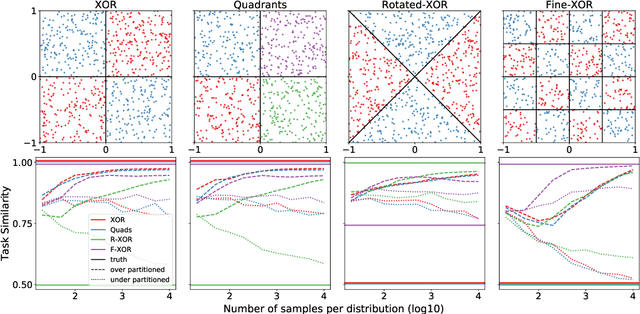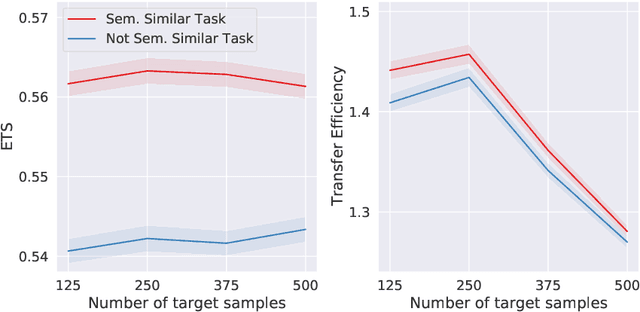Ronak D. Mehta
A partition-based similarity for classification distributions
Nov 12, 2020


Abstract:Herein we define a measure of similarity between classification distributions that is both principled from the perspective of statistical pattern recognition and useful from the perspective of machine learning practitioners. In particular, we propose a novel similarity on classification distributions, dubbed task similarity, that quantifies how an optimally-transformed optimal representation for a source distribution performs when applied to inference related to a target distribution. The definition of task similarity allows for natural definitions of adversarial and orthogonal distributions. We highlight limiting properties of representations induced by (universally) consistent decision rules and demonstrate in simulation that an empirical estimate of task similarity is a function of the decision rule deployed for inference. We demonstrate that for a given target distribution, both transfer efficiency and semantic similarity of candidate source distributions correlate with empirical task similarity.
A general approach to progressive learning
Apr 28, 2020



Abstract:In biological learning, data is used to improve performance on the task at hand, while simultaneously improving performance on both previously encountered tasks and as yet unconsidered future tasks. In contrast, classical machine learning starts from a blank slate, or tabula rasa, using data only for the single task at hand. While typical transfer learning algorithms can improve performance on future tasks, their performance degrades upon learning new tasks. Many recent approaches have attempted to mitigate this issue, called catastrophic forgetting, to maintain performance given new tasks. But striving to avoid forgetting sets the goal unnecessarily low: the goal of progressive learning, whether biological or artificial, is to improve performance on all tasks (including past and future) with any new data. We propose a general approach to progressive learning that ensembles representations, rather than learners. We show that ensembling representations---including representations learned by decision forests or neural networks---enables both forward and backward transfer on a variety of simulated and real data tasks, including vision, language, and adversarial tasks. This work suggests that further improvements in progressive learning may follow from a deeper understanding of how biological learning achieves such high degrees of efficiency.
 Add to Chrome
Add to Chrome Add to Firefox
Add to Firefox Add to Edge
Add to Edge